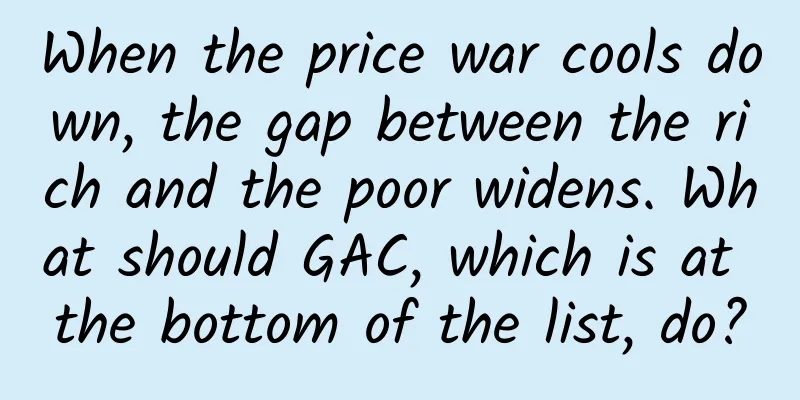Do you really know what these aerospace terms mean?

|
Payload, window... Do you really know what these aerospace terms mean? This year is the decisive year for the construction of my country's space station, and it also coincides with the 30th anniversary of the establishment of China's manned space program. There are more and more news, short videos, film and television works about China's manned space program. Do you really understand the professional terms related to manned space program? Today, let us study the "Encyclopedia of Manned Spaceflight" and increase our knowledge together! Load In a broad sense, in addition to the cargo bags and experimental cabinets that are carried into space, the upper stage and fuel of a multi-stage launch vehicle before separation from the upper stage are all considered payloads, but these are not all the products we actually want to carry into space. In a narrow sense, the payload mentioned in manned spaceflight news reports refers to the effective payload, which is the instruments, equipment, personnel, experimental organisms and test pieces that directly realize the specific tasks that the spacecraft needs to complete during its in-orbit operation. Vertical transfer Transshipment, also known as transfer, generally refers to the transfer of ship and rocket products, cargo packages, etc. from one place to another. The vertical transfer we often talk about refers specifically to the transfer of a rocket carrying a payload from the final assembly and test plant to the launch tower in a vertically fixed manner on the launch platform. Controlled reentry As the name implies, controlled reentry refers to the spacecraft flying out of the earth and re-entering the earth's atmosphere under human or automatic control. For example, after Tianzhou-2 separated from the core module of the space station, after the platform status was confirmed, it gradually decayed from a circular orbit to an elliptical orbit through two braking decelerations, and re-entered the atmosphere at an altitude of about 100 kilometers from the ground. In the end, Tianzhou-2 experienced hull disintegration in the atmosphere: through high-temperature ablation in the atmosphere, the Tianzhou-2 cargo spacecraft and the space station garbage, used gas cylinders, cargo packaging, etc. it carried were burned together. Launch Window The time range in which a spacecraft is allowed to launch is called a launch window, and the launch of a spacecraft requires the selection of a corresponding launch time. The selection of a window is mainly determined by the mission to be performed by the spacecraft and the special requirements of the energy equipment and measurement equipment on the spacecraft, such as the requirements for the working time of the solar cell wings on the spacecraft and the requirements for the detection effect of the optical detection equipment. Zero Zeroing refers to a fault analysis mode. When a problem occurs in a certain link of the system, it is necessary to trace the source from the first step to the last step, abandon subjective assumptions, and re-verify one by one until the problem is completely solved. Specifically, it can be summarized as: Accurate positioning: If a problem occurs during the test, aerospace technicians need to work together to analyze the data, create a fault tree, and accurately find the cause of the problem. Clear mechanism: After accurate positioning, it is necessary to explore the inherent physical laws that cause the problem and analyze the problem thoroughly. Problem reproduction and effective measures: After the analysis is completed, a computer simulation is required to first confirm whether the causes analyzed previously will cause the fault to reoccur, and then verify whether the subsequent countermeasures are effective. Learn from one example and apply it to other situations: Finally, summarize the problem and think about whether similar problems exist. Experiment/Test Generally speaking, an experiment does not rely entirely on specific standard documents to determine whether it is successful (pure scientific research often does not even have standards), but mainly designs the conditions and methods of the experiment based on the purpose of the experiment, and then operates it to observe whether the experimental product can achieve the expected or unknown effect. Test is to verify whether the product, component or material meets the standard (such as type test) according to the existing standards (international, national, enterprise standards). That is, the verification operation is carried out based on the known results of the test product. In the Chinese space station, scientific experiments and technical experiments are often carried out. The former is called scientific experiment because it needs to rely on the microgravity environment in space to perform operations that cannot be performed on the ground. The latter is mostly verification operations for work that has been tested many times on the ground, such as robotic arm transfer, so it is called technical experiment. Applied flight The so-called applied flight is relative to the experimental flight whose main purpose is to verify technology. Experimental flight is mainly to test the extreme performance of the aircraft, while applied flight generally does not fly to the extreme performance. For example, the Tianzhou-2 cargo spacecraft is the first applied flight of the space station cargo system composed of the Tianzhou cargo spacecraft and the Long March 7 rocket. Its characteristics are: first, the purpose of the flight mission is to provide supplies and carry out equipment testing for space application projects. Second, the status of the flight product has been verified by the previous mission, and the technical status is basically solidified. Primary/Backup The primary and backup are interrelated. The backup astronauts we often hear about are there to ensure that they can serve as full-scale substitutes for the primary astronauts in special situations. In addition to astronauts, the parachutes used when manned spacecraft return to Earth also include main parachutes and backup parachutes, which complement each other and ensure the safety and success of the mission. |
Recommend
Shadows in the Sun! The death list of smart hardware is here
This article is transferred from Sohu Media Platf...
There is no vacuum in the universe, so what exactly is vacuum?
The word "vacuum" is not unfamiliar to ...
How do I remotely manage my server?
After renting or hosting a server, you do not nee...
Gentle White is Not White · Douyin 0-cost project: single-day income of 500, no work release, no account maintenance [video course]
Gentle White is Not White · Douyin 0-cost project...
After 27 years of outstanding achievements, Ariane 5 rocket officially ends
In the early morning of July 6, Beijing time, Eur...
Aurora: A Magnificent Symphony of Solar Wind and Earth's Magnetic Field
Aurora is a colorful plasma phenomenon that occur...
How to take advantage of the Qixi Festival marketing trend?
Another Chinese Valentine's Day is coming, Ar...
Can I go home for New Year's Day and Spring Festival? Summary of return home policies in various places!
Editor: Zhai Qiaohong Editor: Zhao Wen Source: Pe...
Content Promotion|How to build private domain traffic?
As China's mobile Internet penetration accele...
How to set prices to achieve the highest profit for products? 5 Win-Win Price Discrimination
In the face of price, all kinds of promotions pal...
Content Operations: To write a good copy, start by learning how to chat
Sincere emotions, clear views, fluent language an...
African kids wish North Korea happy birthday video
A simple small blackboard with words written on i...
Keep brand marketing promotion model!
In recent years, I have found that vertical Inter...
Cool effect, Volvo submits patent application for new head-up display
According to foreign media reports, Volvo recentl...









